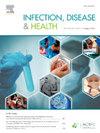Exploring challenges and policy considerations in point-of-care testing for hospital preparedness ahead of infectious disease emergencies: A qualitative study
IF 2
Q2 PUBLIC, ENVIRONMENTAL & OCCUPATIONAL HEALTH
引用次数: 0
Abstract
Background
Despite the uncertainty raised by several studies regarding the practicality of Point-of-Care Testing (POCT) in hospital settings, the urgency prompted by the COVID-19 pandemic led many hospitals to invest in these rapid diagnostics. As the COVID-19 pandemic showcased the potential of POCT in emergency situations, an urgent call arises to leverage the successes and lessons learned for the long-term benefit of healthcare systems, particularly in preparation for the next pandemic of viral respiratory nature.
Methods
We conducted semi-structured interviews with nine emergency care and hospital laboratory stakeholders with expertise and responsibility over POCT operations within hospital systems during the COVID-19 pandemic in Maryland, USA. The grounded theory approach was utilized, and the transcripts were thematically analyzed through an iterative process.
Results
Three distinct themes were identified as barriers to POCT implementation: Regulatory barriers encompassed inconsistencies between the federal and state regulations and a regulatory structure that lags technological advancements. Staffing and operational barriers comprised a shortage of POCT workforce including nurses and Point of Care coordinators. Economic barriers were linked to the overall cost of integrating new POCT devices into the existing testing menu at emergency departments.
Conclusion
We conclude with strategies, including policy considerations, to enable and sustain decentralized POCT programs within hospitals. Some of these strategies include expanding the workforce trained in the regulatory procedures required to support POCT; harmonizing state and federal regulations for diagnostic testing, especially for FDA-waived POCT; and sustained funding for POCT development and use for public health preparedness.
探索在传染病突发事件发生前医院准备工作中进行床旁检测所面临的挑战和政策考虑因素:定性研究。
背景:尽管一些研究对医院环境中的床旁检测(POCT)的实用性提出了不确定性,但 COVID-19 大流行所引发的紧迫感促使许多医院投资于这些快速诊断技术。由于 COVID-19 大流行展示了 POCT 在紧急情况下的潜力,人们迫切要求利用成功经验和教训为医疗系统带来长期利益,特别是为下一次病毒性呼吸道疾病大流行做准备:方法:在美国马里兰州 COVID-19 大流行期间,我们对九名急诊护理和医院实验室的相关人员进行了半结构化访谈,他们都具有专业知识并负责医院系统内的 POCT 操作。我们采用了基础理论方法,并通过迭代过程对访谈记录进行了主题分析:结果:确定了三个不同的主题作为实施 POCT 的障碍:监管障碍包括联邦和州法规之间的不一致,以及监管结构滞后于技术进步。人员和操作障碍包括 POCT 劳动力短缺,包括护士和护理点协调员。经济障碍与将新的 POCT 设备整合到急诊科现有检测菜单中的总体成本有关:最后,我们提出了一些策略,包括政策考虑因素,以促进和维持医院内的分散式 POCT 项目。其中一些策略包括:扩大接受过支持 POCT 所需的监管程序培训的员工队伍;协调各州和联邦的诊断检测法规,尤其是美国食品及药物管理局豁免的 POCT;持续资助 POCT 的开发和使用,以做好公共卫生准备。
本文章由计算机程序翻译,如有差异,请以英文原文为准。
求助全文
约1分钟内获得全文
求助全文
来源期刊

Infection Disease & Health
PUBLIC, ENVIRONMENTAL & OCCUPATIONAL HEALTH-
CiteScore
5.70
自引率
5.70%
发文量
40
审稿时长
20 days
期刊介绍:
The journal aims to be a platform for the publication and dissemination of knowledge in the area of infection and disease causing infection in humans. The journal is quarterly and publishes research, reviews, concise communications, commentary and other articles concerned with infection and disease affecting the health of an individual, organisation or population. The original and important articles in the journal investigate, report or discuss infection prevention and control; clinical, social, epidemiological or public health aspects of infectious disease; policy and planning for the control of infections; zoonoses; and vaccination related to disease in human health. Infection, Disease & Health provides a platform for the publication and dissemination of original knowledge at the nexus of the areas infection, Disease and health in a One Health context. One Health recognizes that the health of people is connected to the health of animals and the environment. One Health encourages and advances the collaborative efforts of multiple disciplines-working locally, nationally, and globally-to achieve the best health for people, animals, and our environment. This approach is fundamental because 6 out of every 10 infectious diseases in humans are zoonotic, or spread from animals. We would be expected to report or discuss infection prevention and control; clinical, social, epidemiological or public health aspects of infectious disease; policy and planning for the control of infections; zoonosis; and vaccination related to disease in human health. The Journal seeks to bring together knowledge from all specialties involved in infection research and clinical practice, and present the best work in this ever-changing field. The audience of the journal includes researchers, clinicians, health workers and public policy professionals concerned with infection, disease and health.
 求助内容:
求助内容: 应助结果提醒方式:
应助结果提醒方式:


